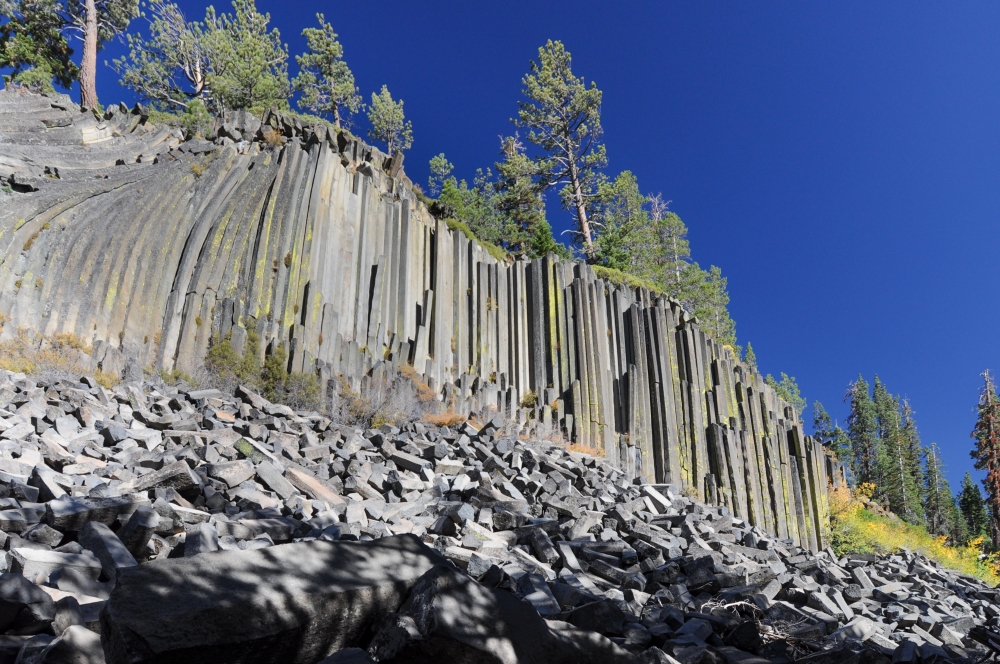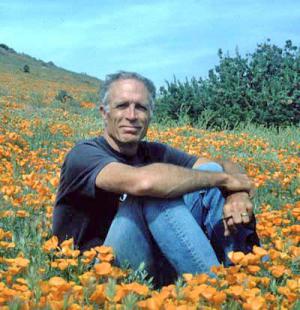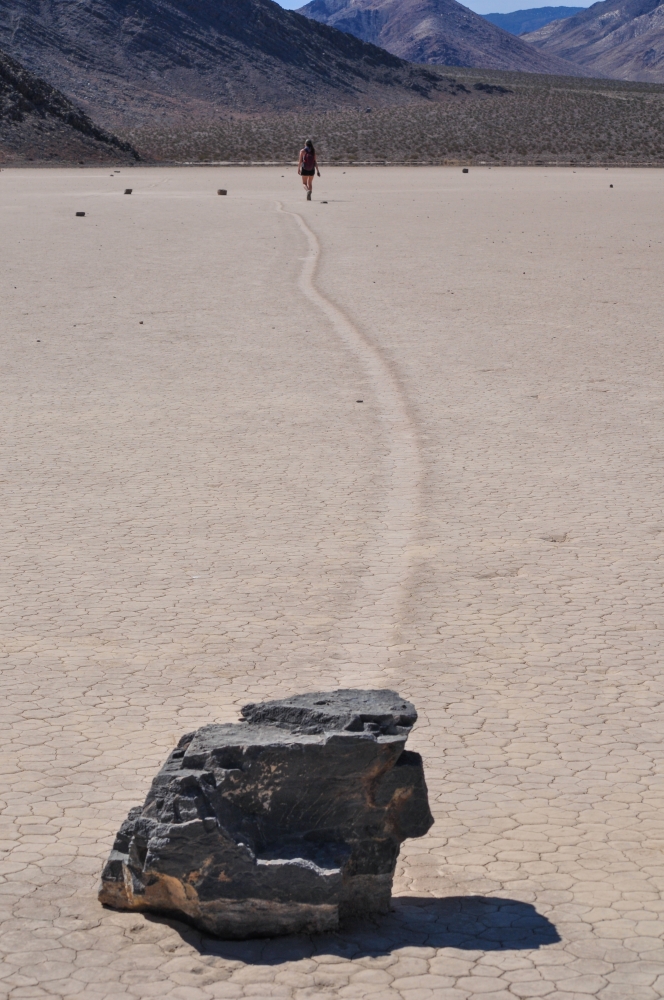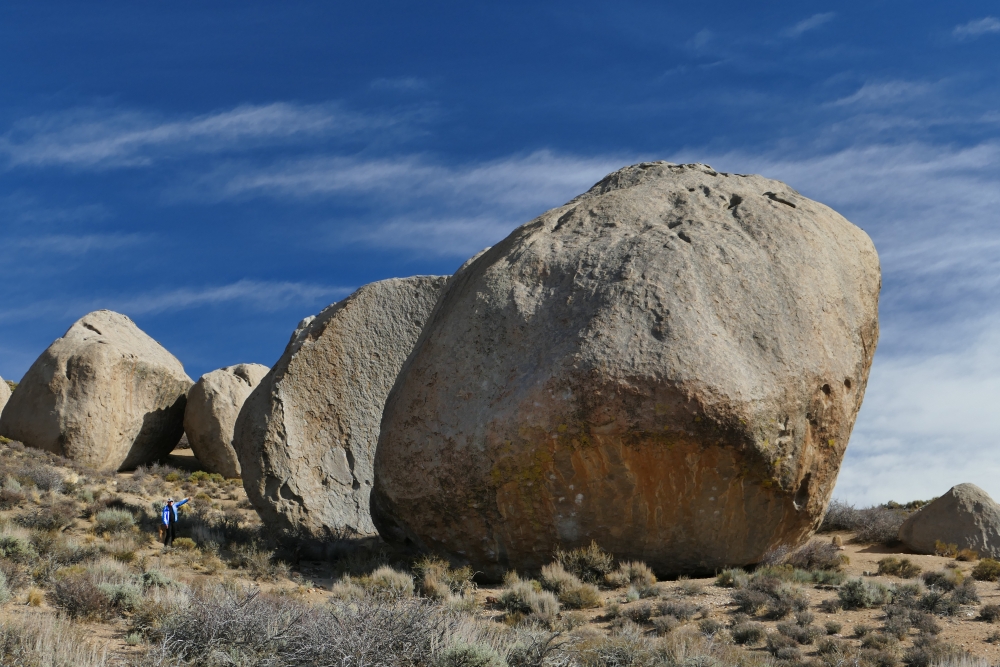
Geology Underfoot

Eastern California is the perhaps the best place in the country to learn geology. The deserts beyond the Sierra Nevada host glacial features, volcanoes and rivers. Beautiful stratigraphic layers are cut by fault lines and laid bare by erosion.
“There are so many varied and different features out there that are well exposed and easy to get to,” said author Arthur Sylvester, a professor emeritus in UC Santa Barbara’s Earth Science department.
Sylvester collaborated with Allen Glazner, a professor emeritus at the University of North Carolina at Chapel Hill, on the second edition of “Geology Underfoot in Death Valley and Eastern California.” Glazner published the first edition in 1998 with the late Robert Sharp, and the book was overdue for an update. “The old one was in black and white,” Sylvester said. “It just didn’t look professional anymore.”

The sailing rocks of Death Valley’s Racetrack Playa have long perplexed visitors and geologists alike.
Photo Credit: MARLI MILLER
The new edition presents 33 vignettes about fascinating and unique locations in eastern California. Some, like Death Valley’s Racetrack Playa, are updated from the previous edition, whereas others, like the Buttermilk boulder field, are completely new. The book provides insight not only into the dynamic geology of eastern California, but also into the field and occupation of geology itself.
Racetrack Playa in Death Valley features prominently in the first edition, with one of the sailing stones gracing the book’s cover. The authors updated the chapter on the enigmatic site with recent discoveries about how the stones slide along the desert floor. To assemble the long-sought explanation for this, Sylvester and Glazner consulted with the scientists who solved the mystery in 2013.
The book features original research as well. The authors dispel a common misconception surrounding the Buttermilk boulders, a popular climbing spot northeast of Bishop. Most folks familiar with the area claim that the massive stones were delivered by glaciers. “But they’re not the right kind of rocks,” Sylvester said. “There’s no granite up where these would have come from in the Sierra.” He and Glazner take readers through the scientific process as they piece together the stones’ true origin.
“It’s the first time anyone has written about the origin for those boulders,” Sylvester added. The authors will present their findings at a meeting of the Geological Society of America in Las Vegas in March.

The Peabody boulders (foreground center) are among the largest of the stones in the Buttermilk boulder field, dwarfing the nearby hiker.
Photo Credit: MARLI MILLER
Meanwhile, vignette 24 offers a glimpse into the life of a geologist, by way of some fascinating natural features. Training to become a geologist involves a considerable amount of fieldwork, and the Poleta Folds, located in Deep Springs Valley east of Big Pine, are one of the country’s most popular field sites.
The folds are both a geologist’s dream and a nightmare: an overwhelming diversity of geological features all beautifully exposed. Red, white and blue layers wind their way across the landscape, cut here and there by faults. The landscape presents a perfect challenge for budding geologists. “Probably 10,000 geology students have cut their teeth learning how to make a geologic map here,” Sylvester remarked. “Sometimes I’ve been out there when as many as 14 different schools are there all at once.”
In fact, due to its popularity as a teaching site, the authors had to be careful not to give too many details. “We had to write that chapter in a way that doesn’t reveal all of the answers,” Sylvester said. “And so we sent the chapter to several instructors who do take students out there to make sure we hadn’t.”
“Geology Underfoot in Death Valley and Eastern California” joins several California geology books that Sylvester had a hand in writing. The “Roadside Geology” series covers the origins of features visible from the state’s major highways, whereas the “Geology Underfoot” books invite readers to get out of their cars and explore. The “Roadside” books are perfect for the trip on your way to visit the places in featured in the “Underfoot” series.
“Our goal was to bring an updated, full-color book about the spectacular geology of Death Valley and eastern California to people who are curious about the world around them,” Sylvester said. “We hope those readers will gain as much enjoyment using the book as the two of us had visiting the vignette sites together and writing about them.”



